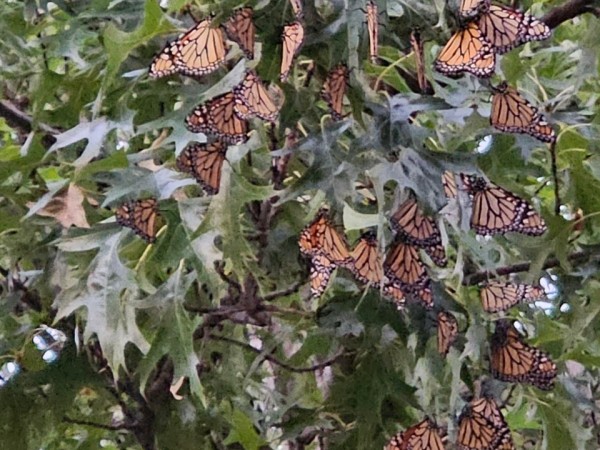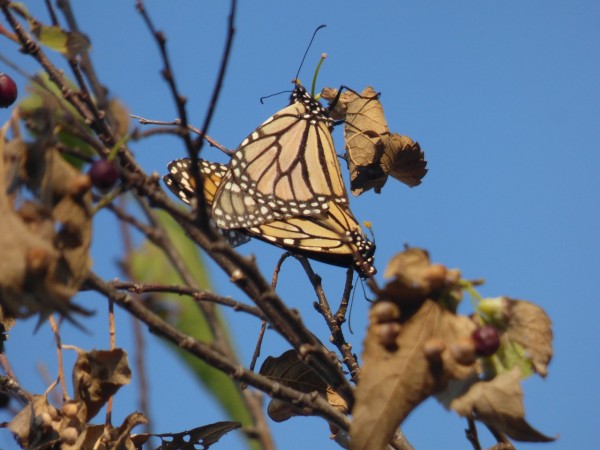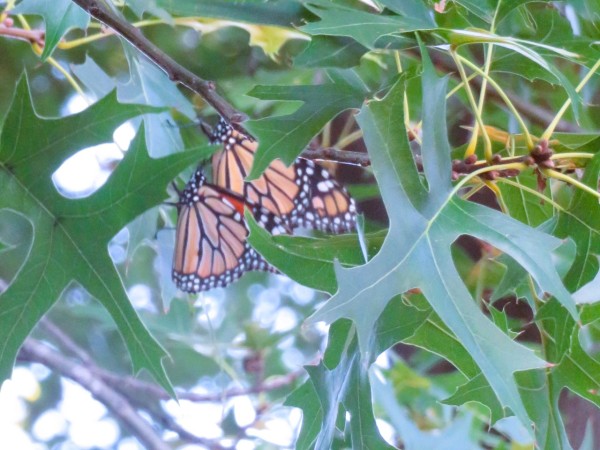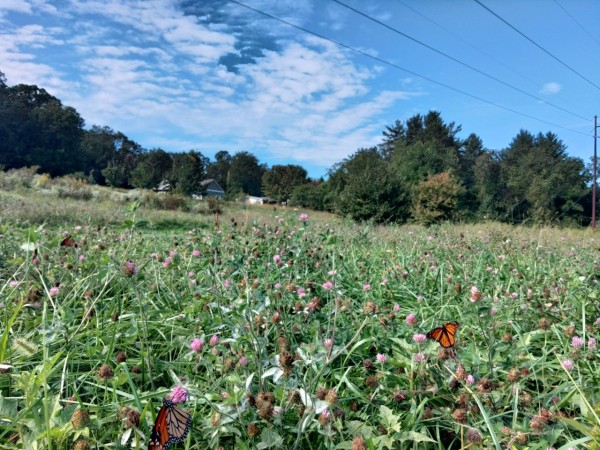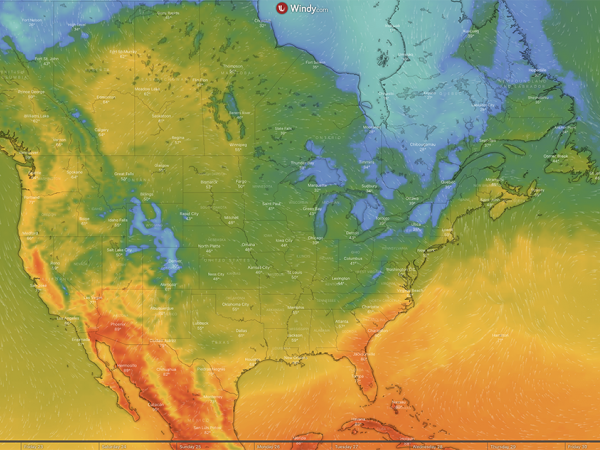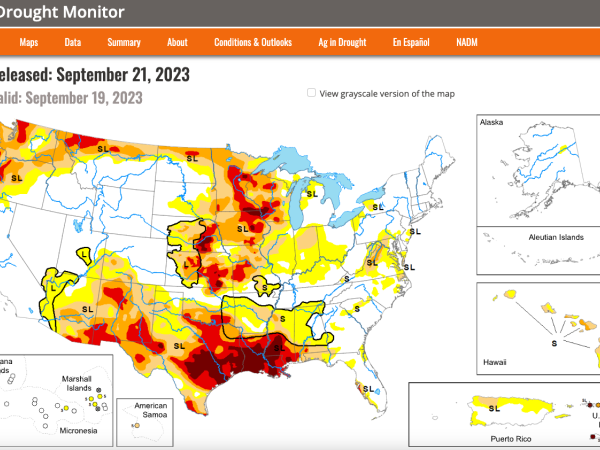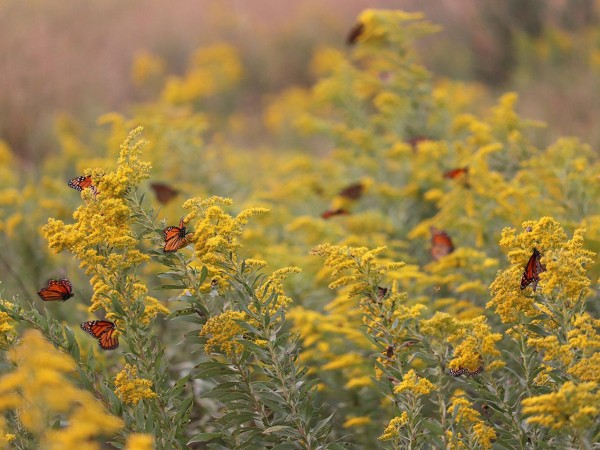Eastern Monarch Fall 2023 Report #2
Roost Activity
The leading edge of fall roosts recently were concentrated around latitudes 35-38°N, primarily in Oklahoma and Kansas. Roosts show us where large concentrations of migrating monarchs are found and reveal the main migration pathways to Mexico. Check out the Monarch Fall Roost map to explore more observations.
Amy in Belton, MO: "I have never seen so many Monarch Butterflies. There were 20 Oak trees with several roosts in each tree." (09/17/2023)
Linda in Walton, KS: "Counted 30 monarchs fluttering along the south edge hedge of a sunflower field starting to roost about 6 pm, then at least 40 along the south hedge of the 2nd field. Sunny, south breeze. . ." (09/21/2023)
Pam in Ellinwood, KS: "Estimated 50 monarchs in shelter belt on honey locust and cedar trees, 9 a.m. - 12 p.m. Morning was overcast, when most were spotted (tagged 38). Low west wind (less than 10 mph) until about 11 a.m., when wind switched to north and up to 15 mph." (09/23/2023)
Sonia in Oklahoma City, OK: "We have at least 50-100 in the garden last night to roost in our oak, pecan and redbud trees." (09/26/2023)
Peak Migration Events
The peak migration map shows hot spots during the past two weeks largely concentrated in the Midwest and along Lakes Ontario and Erie. Many observers expressed concern about the impact of severe weather events on the migration. Weather patterns, like drought and hurricanes, can impact monarchs' ability to acquire sufficient fat reserves. Tropical storms along the Atlantic Seaboard may be a factor in not many peak migration events being reported to Journey North. What monarch activity is being observed along the Eastern Flyway? Please share your observations with us!
Action has been noted at Cape May, New Jersey, and in the Carolinas.
Bob in Cape May Point, NJ: "Fall migration has really started. Largest count this season." (09/16/2023)
Emily in Black Mountain, NC: "Estimating around 200 nectaring in a 10 acre field/monarch waystation of red clover, frost aster, goldenrod, showy tickseed and some tithonia in the nearby community garden. Even a common milkweed or two still blooming for them. Will watch tonight to see if we spot a roost." (09/25/2023)
Journey North is partnering with the North Carolina Wildlife Federation to promote monitoring monarch and hummingbird migration along the Butterfly Highway, a statewide conservation restoration initiative that aims to restore native pollinator habitats to areas impacted by urbanization, land use change, and agriculture across the state.
Read more about the Butterfly Highway>>
Please Report to Journey North
If you are seeing peak movement of monarchs or roosts, please let us know. Reporting amidst varying weather events provides crucial information on monarch migration, in all types of conditions.

